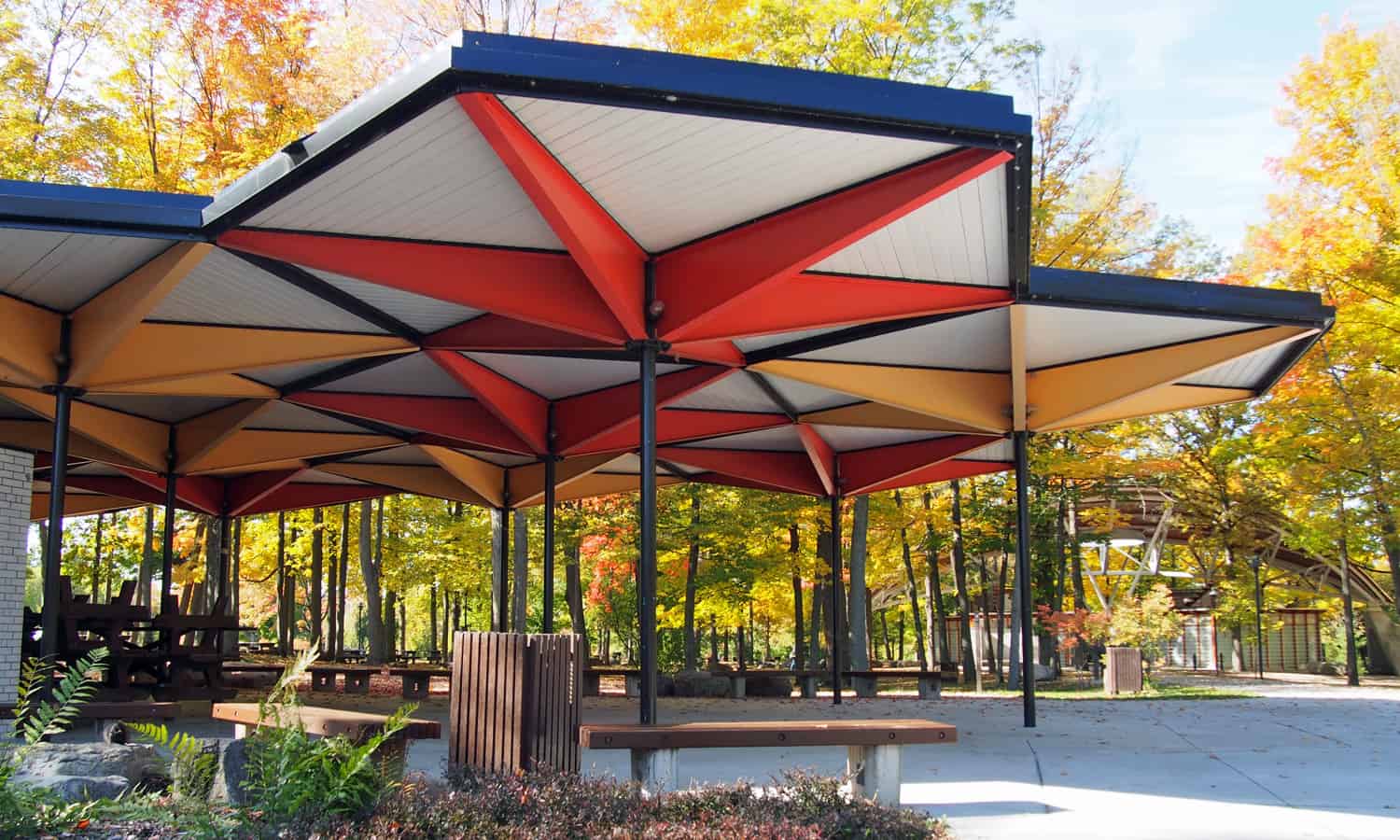Summer 2024 is in full swing in the National Capital Region, and it’s the perfect time of year to take advantage of the city’s outdoor spaces.
Ottawa’s public space has come a long way since the days of Major’s Hill Park, which faced a significant amount of opposition during its conception. The city now boasts immense amounts of diverse greenspace, beaches, and gardens, spread from Centretown to the suburbs.
Many of the capital’s notable parks and outdoor recreational areas were inaugurated during the modernist period, as a result of the Greber plan.
Vincent Massey Park
1958 – Hart Massey
The park features several pavilions, as well as an effectively designed bus stop. The pavilions feature a signature orange and yellow underside that creates an especially unique dialogue with the autumn leaves. The park itself spans a significant amount of space and was once connected with Hog’s Back Park to the south, prior to the construction of Huron Road.
A new pedestrian bridge on the north side of the park connects Carleton University across the Rideau River, adding another layer of accessibility to the city. The park is an incredible space for community gatherings due to its size and numerous amenities, such as picnic tables, barbecue pits, softball diamond and bandstand.
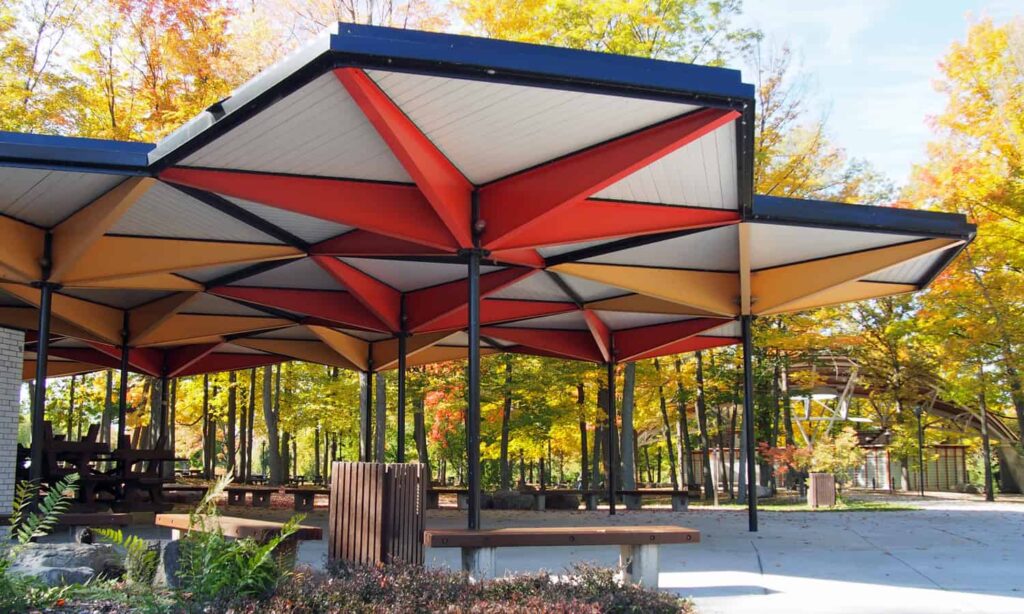
Mooney’s Bay Beach Pavilion
1961 – Wallace Sproule
The pavilion at Mooney’s Bay Beach is one of several that were constructed at municipal beaches in the middle of the twentieth century. The pavilion is designed with covered walkways that connect service areas to the centrally located canteen.
A canteen, change rooms, and washrooms in the pavilion service the beach. There is no shortage of activity at Mooney’s Bay – volleyball nets, tennis courts, a fitness park, and a playground fill the greater beach area.
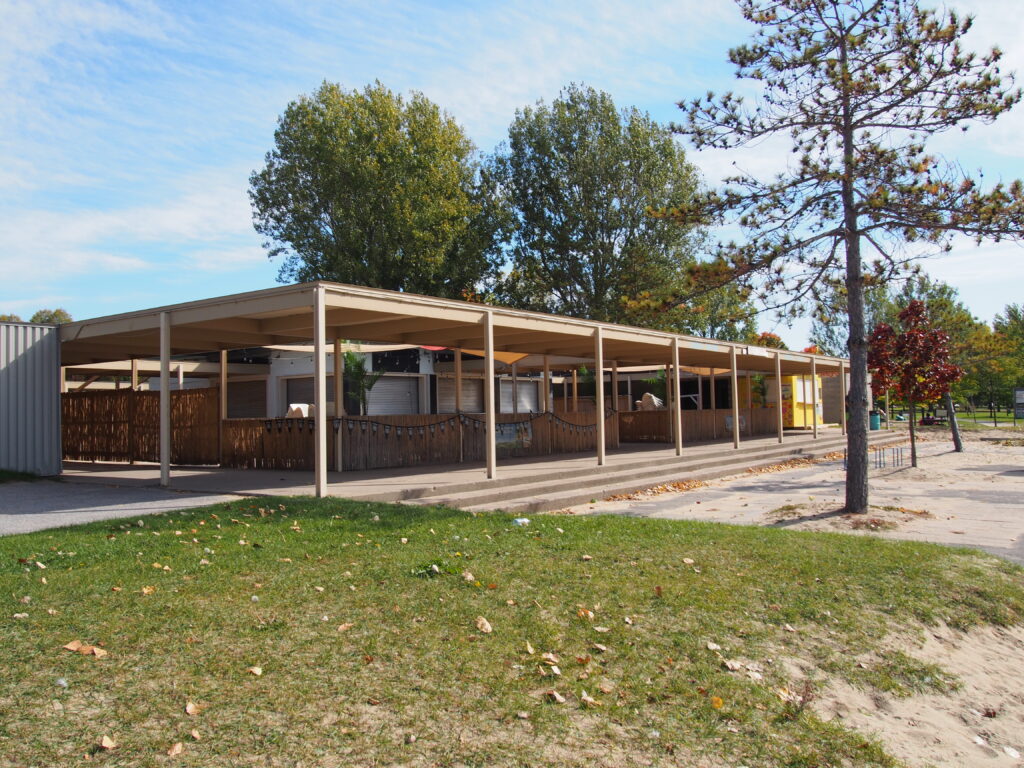
Westboro Beach Pavilions
1966 – James Strutt
The Westboro Beach Pavilions are three concrete volumes along the Ottawa River. The decisive geometry of each pavilion is reinforced through the heaviness of the concrete. The original design of the pavilions included a glass roof to allow light to fill the concrete volume, but these were replaced instead with metal.
Although significantly smaller than Mooney’s Bay, the Westboro Beach offers a nice summer spot along the Ottawa River. The original Strutt-designed pavilions house change rooms and a small canteen. In 2022, the NCC approved a redevelopment scheme for the beach, which includes retrofits and upgrades to the original pavilions, as well as the construction of a new restaurant. Despite the construction, a portion of the beach is open to the public in Summer 2024!
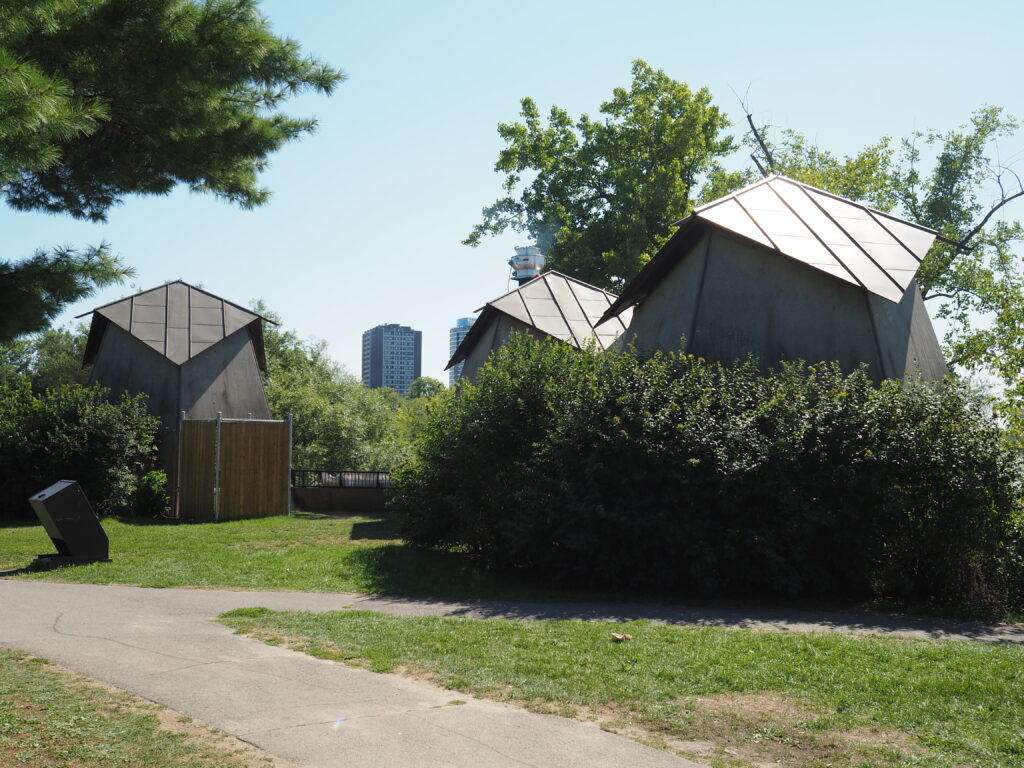
Garden of the Provinces and Territories
1962 – Don W. Graham
The Garden of the Provinces and Territories (originally the Garden of the Provinces) was implemented as part of the Greber Plan and is one of Ottawa’s most recognizable pieces of modern landscape architecture.
The Garden offers great places for shade on a hot day, as well as a view of the Library and Archives of Canada. With new memorials and sculptures in the works in the area surrounding the garden, it continues to develop into a unique destination within the city.
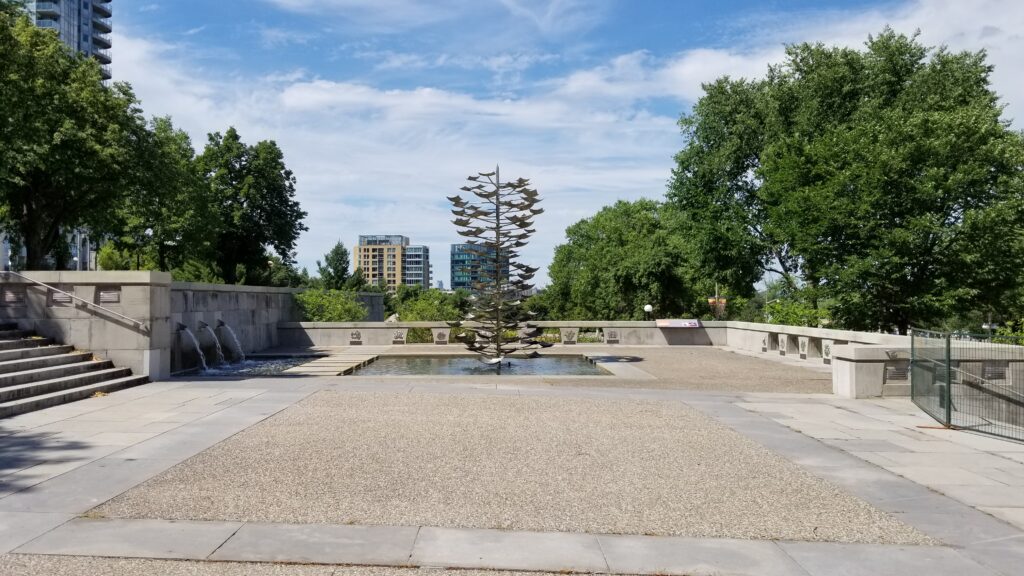
In addition to those inaugurated between the late 1950s and early 1970s, the National Capital Region is filled with great public spaces, no matter where you are in the city, and no matter what time of year.
For more information on modern places in the national capital, check out our in-house blog Capital Modern.
Get out and enjoy Ottawa’s urban spaces!

